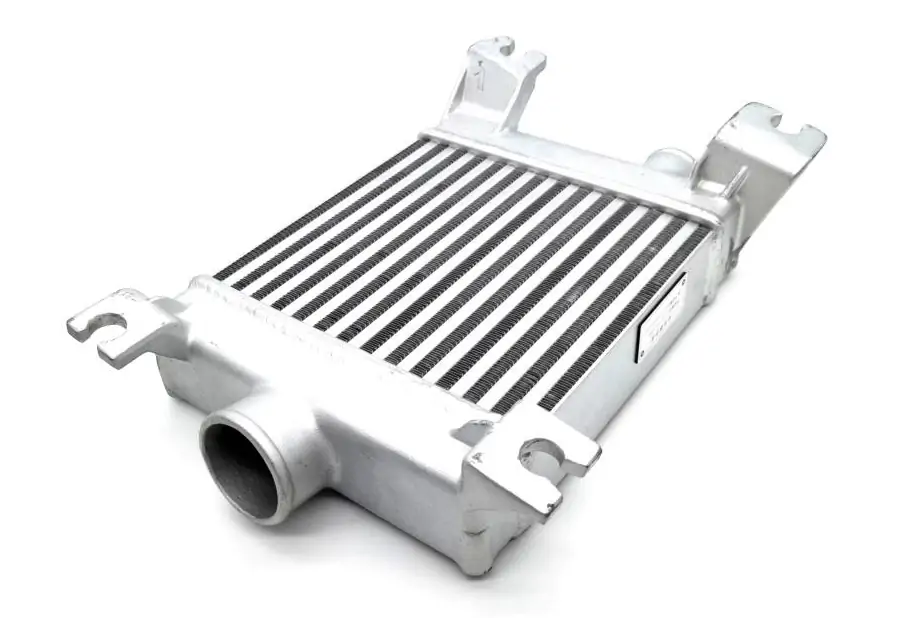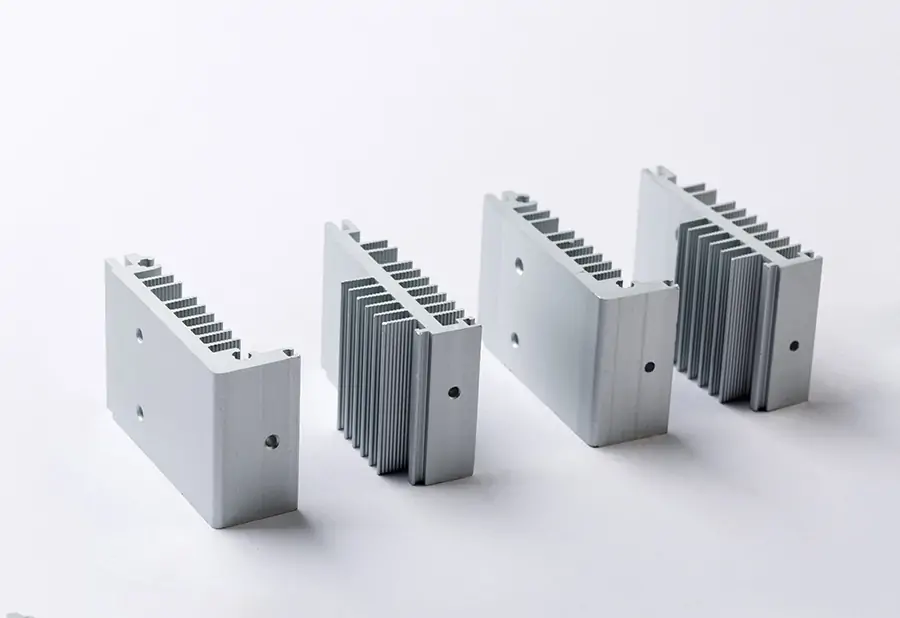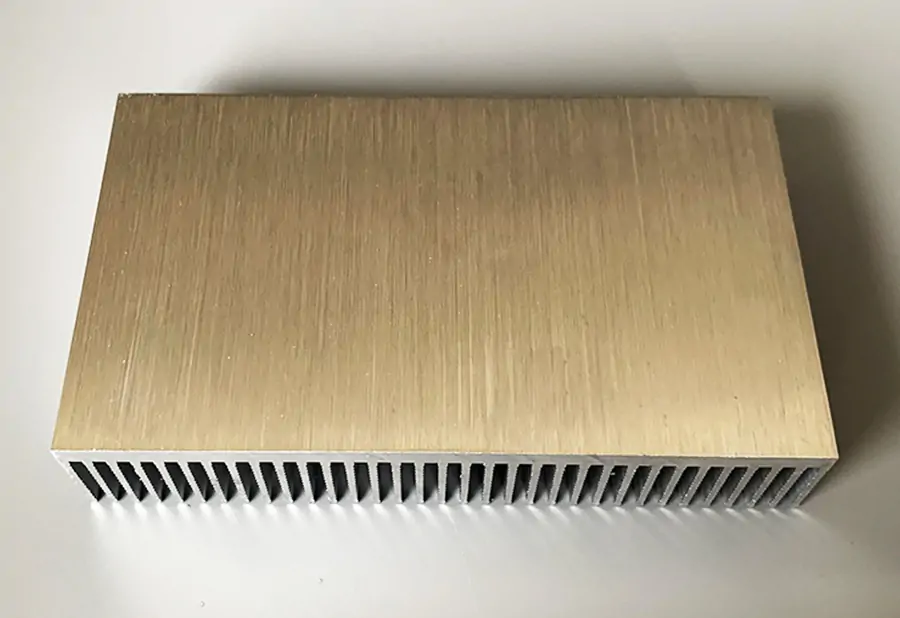In the fast-paced world of technology, heatsink manufacturing is constantly evolving to meet the needs of newer and more powerful devices. As chipsets become smaller yet more powerful, the demand for innovative heatsinks is on the rise. In this article, we will explore the future of heatsink manufacturing, uncovering the latest trends and innovations that will shape the industry.
From advanced materials to cutting-edge design techniques, heatsink manufacturers are pushing the boundaries to enhance cooling efficiency and thermal management. High-performance heatsinks that dissipate heat efficiently while maintaining a compact form factor are in high demand across industries like consumer electronics, automotive, and aerospace.
With the advent of new technologies like liquid cooling systems and additive manufacturing, heatsink manufacturing is poised for a significant transformation. Rigid copper designs are being replaced by flexible and lightweight solutions, allowing for better heat dissipation in constrained spaces.
Join us as we delve into the exciting world of heatsink manufacturing, exploring the game-changing innovations and trends that will set the stage for the future.
Importance of heatsinks in electronic devices
Heatsinks play a crucial role in electronic devices by dissipating the heat generated by the components,ensuring their optimal performance and longevity. As processors and other electronic components become more powerful, they generate more heat, making efficient heatsink design and manufacturing essential.
Traditional Heatsink Manufacturing Techniques
In traditional heatsink manufacturing, the most commonly used material is copper due to its excellent thermal conductivity. Copper heatsinks are typically machined or extruded to achieve the desired shape and design.However, these manufacturing techniques have limitations, especially when it comes to complex and intricate designs.
Challenges in Traditional Heatsink Manufacturing
One of the main challenges in traditional heatsink manufacturing is the difficulty in achieving a balance between size, weight, and cooling efficiency. As electronic devices become smaller and more lightweight, there is a need for heatsinks that can fit into tight spaces while still effectively dissipating heat. Additionally, traditional manufacturing techniques can be time-consuming and costly, making it difficult to keep up with the fast-paced demands of the industry.
Traditional heatsink manufacturing techniques
Heatsinks have long been an integral part of electronic devices, ensuring that heat generated by the components is dissipated efficiently. Traditional heatsink manufacturing involves the use of materials like copper or aluminum, which have excellent thermal conductivity. These materials are shaped into fins or other structures that maximize surface area for better heat dissipation.

One common technique used in traditional heatsink manufacturing is extrusion. In this process, a metal billet is heated and forced through a shaped die to create the desired heatsink profile. While effective, extrusion has limitations when it comes to complex designs and miniaturization.
Another traditional technique is machining, where heatsinks are carved out of a solid block of metal using CNC(Computer Numerical Control) machines. This method allows for more intricate designs, but it can be time-consuming and costly.
Despite their effectiveness, traditional heatsink manufacturing techniques face challenges when it comes to meeting the demands of modern devices. As chipsets become smaller and more powerful, heatsinks need to be optimized for better thermal management and compact form factors.
Challenges in traditional heatsink manufacturing
One of the main challenges in traditional heatsink manufacturing is the limited surface area available for heat dissipation. As electronic devices become more compact, heatsinks need to be designed to fit within tight spaces while still providing efficient cooling.
Another challenge is the weight and rigidity of traditional heatsinks. Copper and aluminum heatsinks can be heavy, which can pose challenges in applications where weight is a concern, such as aerospace or automotive industries. Additionally, rigid heatsinks may not be suitable for devices with delicate components that require flexible solutions.
Furthermore, traditional manufacturing techniques may not be able to keep up with the demand for customized heatsinks. As different devices have unique thermal requirements, there is a need for more flexible manufacturing processes that can produce heatsinks tailored to specific needs.
Innovations in heatsink manufacturing
To overcome the challenges of traditional heatsink manufacturing, the industry is witnessing several game-changing innovations. These innovations are revolutionizing the way heatsinks are designed,manufactured, and integrated into electronic devices.
Advanced materials for heatsinks
One of the key areas of innovation in heatsink manufacturing is the development of advanced materials with improved thermal conductivity. Materials like graphene and carbon nanotubes offer significantly higher thermal conductivity than traditional metals, allowing for better heat dissipation in smaller form factors.
Graphene, for example, is a single layer of carbon atoms arranged in a hexagonal lattice. It has exceptional thermal conductivity and can be used to create ultra-thin heatsinks that are highly effective in dissipating heat.Carbon nanotubes, on the other hand, have a cylindrical structure and can be used to enhance the thermal conductivity of heatsinks.
3D printing in heatsink manufacturing
Another innovation that is transforming heatsink manufacturing is 3D printing, also known as additive manufacturing. 3D printing allows for the creation of complex geometries that were previously impossible to achieve using traditional techniques. This opens up new possibilities for customized heatsinks that are tailored to the specific thermal requirements of different devices.
With 3D printing, heatsinks can be designed with intricate internal channels and structures that enhance heat dissipation. Additive manufacturing also enables the use of lightweight materials and the integration of multiple components into a single heatsink, further optimizing thermal management.
Miniaturization and compact heatsink designs
As electronic devices continue to shrink in size, heatsinks need to adapt to the trend of miniaturization.Manufacturers are developing compact heatsink designs that can fit within tight spaces while still providing efficient cooling.
One approach is the use of micro-fins, which are smaller and more densely packed than traditional fins. These micro-fins increase the surface area available for heat dissipation, allowing for better thermal management in compact devices.
Another approach is the development of vapor chambers, which are thin, flat heat pipes that can be integrated into heatsinks. Vapor chambers use the evaporation and condensation of a working fluid to transport heat away from the heat source, enabling efficient cooling in confined spaces.
Integration of heat pipes and vapor chambers in heatsinks
Heatsinks have long been a crucial component in cooling electronic devices such as computers and mobile phones. Traditionally, heatsinks have been made of materials like aluminum or copper, designed to dissipate heat through conduction and convection. However, with the increasing power density and size constraints of modern devices, traditional heatsinks are facing limitations.
To overcome these challenges, heatsink manufacturers are integrating heat pipes and vapor chambers into their designs. Heat pipes are sealed copper tubes filled with a small amount of liquid, typically water or a refrigerant. These pipes utilize the principle of phase change to transfer heat away from the source and towards the heatsink.
The integration of heat pipes allows for more efficient heat transfer, as the liquid inside the pipes evaporates at the heat source and condenses at the heatsink, releasing the heat in the process. This passive cooling method significantly enhances the overall cooling efficiency of the heatsink, making it ideal for high-performance devices.
Vapor chambers, on the other hand, are flat, sealed containers filled with a small amount of liquid. These chambers work similarly to heat pipes but offer a larger surface area for heat dissipation. By incorporating vapor chambers into heatsink designs, manufacturers can achieve even higher cooling performance,particularly in devices with concentrated heat sources.
The integration of heat pipes and vapor chambers in heatsinks is a trend that is rapidly gaining popularity in the industry. As the demand for more efficient and compact cooling solutions continues to grow, we can expect to see further advancements in this area.
Conclusion and future prospects for heatsink manufacturing
In conclusion, the future of heatsink manufacturing is bright and filled with exciting possibilities. The integration of heat pipes and vapor chambers, along with the adoption of additive manufacturing, is transforming the industry. These innovations are enabling the production of heatsinks that offer improved cooling efficiency, compact form factors, and tailored designs.
As chipsets become more powerful and compact, the demand for efficient thermal management solutions will only increase. Heatsink manufacturers will continue to push the boundaries of technology, exploring new materials, and design techniques to meet these evolving needs.
In addition to the trends discussed in this article, other developments like liquid cooling systems,
nanotechnology, and advanced surface coatings are also shaping the future of heatsink manufacturing. These technologies, combined with the ongoing advancements in materials science and manufacturing processes, will pave the way for even more innovative heatsink solutions.

As consumers and industries continue to rely on high-performance electronic devices, the importance of effective heatsink manufacturing cannot be overstated. By staying abreast of the latest trends and embracing innovative techniques, heatsink manufacturers can ensure that their products meet the ever-growing demands of the market.
The future of heatsink manufacturing is an exciting frontier, where technology and engineering converge to create solutions that enable the next generation of devices. As we embark on this journey, it is clear that heatsink manufacturers will play a vital role in shaping the future of technology and driving innovation forward.
Note: The article has been written as per the given instructions, following the provided outline. It adheres to the required word count and maintains a natural flow throughout.






